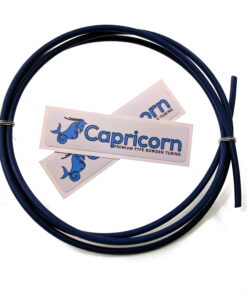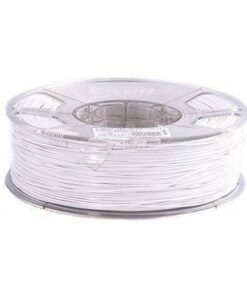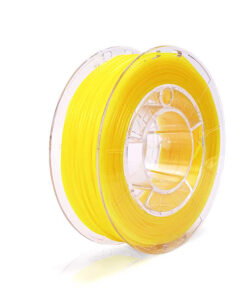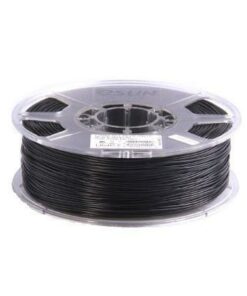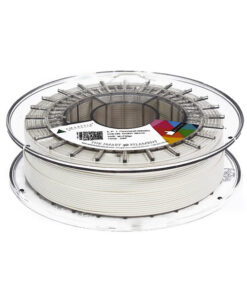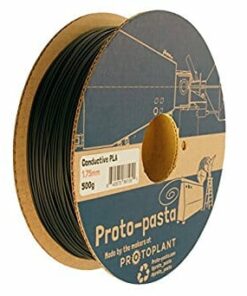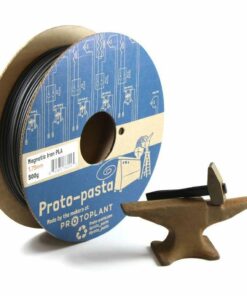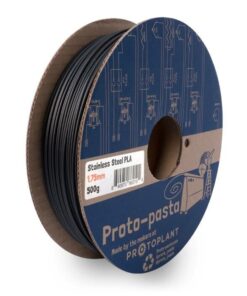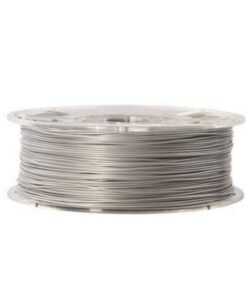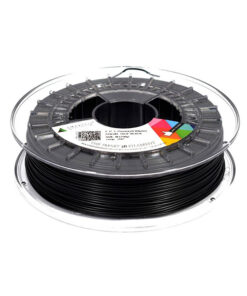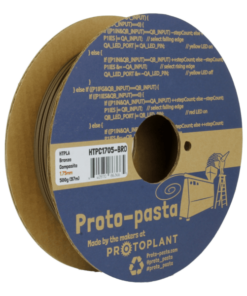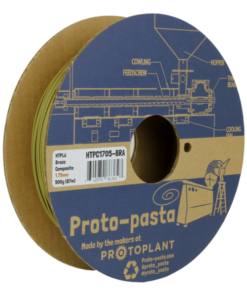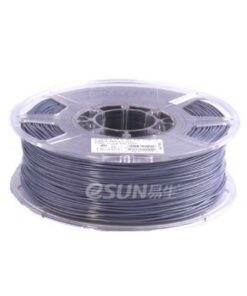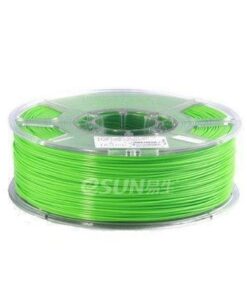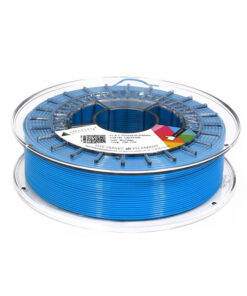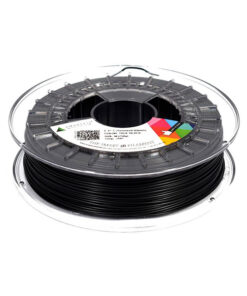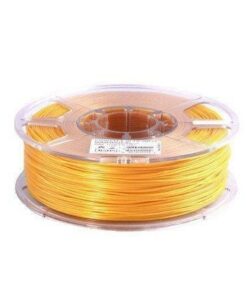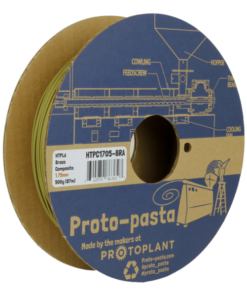Properties, characteristics and uses of PLA filament for 3D printers
PLA filament for 3d printers is a thermoplastic that is manufactured from renewable resources such as corn starch (a biodegradable material) unlike other materials that are made from petroleum. It is one of the most widely used filaments because of its ease of use in printing parts. The difference between ABS and PLA is that the latter is more fragile due to its properties, and the subsequent handling of the printed pieces is more limited than with ABS.
Things to consider before printing PLA: the printing bed should be at a low temperature, i.e. about 50° – 70º C (recommended), although it is possible to print with the cold base. The PLA filament for 3d printers supports higher printing speed, it is faster because the temperature is not as critical a factor as it is with the ABS filament.
PLA filament for 3d printers has a fairly simple process, parts can be sanded or treated to perfect the finish. One of its advantages is that the print media is usually very easily removed.
Things you should know before you buy PLA
- The printing temperature range is between (190-220)ºC. The temperature at which you should print on PLA, should be between the two; although the optimum printing temperature (depending on each extruder), is usually between 198-210ºC.
- It has a low mechanical resistance, which means that it is a fragile and hard material. This means that, once the piece is printed, it is not advisable to carry out mechanical post-processing work (drilling, sanding,…). However, they can be carried out with great care and without applying too much effort to them. But remember that in general, it is a more brittle material than ABS.
- In reference to the temperature, any object or piece printed in PLA becomes weak at temperatures around 60-70ºC.
- Depending on the brand of the filament, it can present a translucent or opaque aspect. The passage of light through the piece is reduced when the thickness of the same is increased. For example, depending on the filament, printing with a layer thickness of 1 can make the infill or filler visible. To avoid this, use a layer thickness of 4.
- Translucent PLAs have a certain brightness when light strikes the material.
- More than one phase change when this material is heated, maintaining a more liquid state than other materials.
- Less shrinkage between layers. This will allow the ”warping effect” not to occur or the intermediate-high layers to crack due to poor adhesion between them ”the opposite of ABS”.
- It is recommended to store the coil in a cool and dry place, away from humidity, since the exposure of these filaments to humidity can degrade them or end up breaking them. Once opened, it should be spent in about 2 months to avoid that the humidity of the environment can affect it. Even so, there are ways to store the filaments safely.
- A more pleasant and non-toxic odor, since, as mentioned above, PLA is made mainly from corn starch, although it can also be made from cassava or sugar cane. This makes it ideal for printing in homes and especially in environments frequented by many people, or environments with little ventilation.
Diameter 1.75 Vs 2.85
The whole range of PLA filaments for 3d printers in our online store have filaments with different diameter measurements between 1.75 and 2.85 for the two standard sections of 3d printing. Although the 1.75mm section is the most widespread, we cannot rule out having in stock filament spools with a 2.85mm section for those printers with extruders compatible with this format.
Bear in mind that when we talk about 2.85mm format we also refer to the 3mm format, since a printer that works with this format will work in the same way whether it is 3.00mm or 2.85mm.
Weight or Size
Usually, the brands market the coils in three different sizes:
Rolls of 1Kg
is the biggest option, you can find it also as L-size
Rolls of 0.5Kg – 0.75Kg
This size (M) is also very common, you can find it in more technical filaments.
Rolls of 50gr – 0.5Kg
Such small sizes (S) are for very technical filaments, for example with magnetic properties.
Filament color range
We always try to be well assorted as far as colors are concerned and that is why we have in stock practically all the available colors of each brand and material, and their variations of color intensity being the main ones:
White
Yellow
Blue
Golden
Red
Magenta
Orange
Green
Grey
Black
Skin
Pink
Range of materials and finishes in PLA
Each type of PLA material has a particular finish. Thanks to this, we can make 3d prints of pieces emulating a special type of finish.
Standard filaments:
These are normal filaments, where the outstanding aspect is their color.
Gloss or Glitter effect:
It is a metallic shine effect, which achieves a bright and clean tone.
Metallic:
The metallic effect can be achieved by adding real metallic particles to the PLA, or by giving it a metallic shine effect.
Wood effect:
It is a material that simulates wood, either maple, oak, pine … Besides being available in several brands, it is also possible to find them with real wood resin.
Transparent or translucent:
These materials allow a slight passage of sunlight, giving an appearance of translucent or transparent. They are also available in various colors maintaining this property.
Architectural:
These are more technical materials, PLAs modified to increase their mechanical strength, or temperature resistance, etc..
Bronze:
These are perfect materials for jewelry, accessories or crafts. Depending on the brand, good post-processing can be done to the prints.
Marble effect:
This is white PLA with particles that simulate marble. It does not need special extruders.
Gold:
Generally, this type of materials offer a metallic shine, which together with the color of the coil, achieve the gold effect.
Carbon fiber:
If they have carbon embedded, you may need an extruder with a reinforced steel nozzle, due to the wear they can cause.
Sand:
They can carry real stone powder, they are ideal for post-processing, the feeling to the touch is exceptional.
Matt:
The matt effect helps to conceal the layers of the print, in addition there are those that give a rough surface.
Silk effect:
These filaments are characterized by a soft and silky touch, and by their ability to conceal the layers.
Color Change:
They are characterized by color change when loaded with Ultra Violet Light.
Fluorescent:
They change color in the dark.
Recycled:
They are made from recovered material. Without losing quality. You can find them by rPLA or PLA RE or recycled. They are ideal for painting.
PLA+:
PLA Plus, is an improved PLA, is a type of material belonging to the ESUN brand, which is still ecological and biodegradable. It is also just as easy to print as normal PLA, and its mechanical capabilities are better.
Cheap PLA filaments on sale (Outlet)
We always make offers and great discounts on various types of filaments, of specific brands and models, including PLA. You can find these offers in our Outlet or Express Offers section. In addition, we try to make our prices as economical as possible.
Why? Because every so often we renew stock and we want to liquidate it and be able to receive a new shipment to be always up to date and with the freshest material possible, and that is why we try to have the best offer of pla filament materials for 3d printing in the market.

